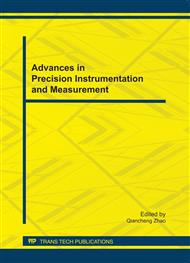p.229
p.234
p.240
p.246
p.252
p.257
p.262
p.268
p.274
Novel Method for ELISA Traces Pipetting System by Air Displacement Pipetting
Abstract:
In the Enzyme-linked immunosorbent assay (ELISA) test, many steps need traces pipetting. The ELISA test results will be different when we use different pipetting ways. Our traces pipetting system is based on the air displacement pipetting principle, comparable to the functioning of hand pipettes. It is applied pressure sensor to realize pressure-based liquid level detection (pLLD) and aspiration monitoring. The monitored system can distinguish the following situations: (1) a correct aspiration; (2) cup empty; (3) tip-blocked; (4) bubbles. Using the air displacement principle into traces pipetting can avoid contamination or dilution by system liquids, and problems with corroded tubing, pumps, etc. It applied pressure sensor to realize pLLD and aspiration monitoring. The results of the real-time monitor module on air displacement pipetting show that the traces pipetting system can agilely distinguish the different liquid pipetting situations. The method of air displacement pipetting offered an effective way for ELISA traces pipetting system.
Info:
Periodical:
Pages:
252-256
Citation:
Online since:
September 2011
Authors:
Price:
Сopyright:
© 2012 Trans Tech Publications Ltd. All Rights Reserved
Share:
Citation:


